A vast majority of all foot pain can be treated with custom insoles and footwear, without surgery, medicines, incisions or pain killers – because most foot pain is caused due by deformed foot posture, poor alignment or abnormal mechanics (motion).
Foot pain can be due to conditions that are congenital or by birth or conditions that are acquired. These acquired conditions cause foot damage (Why do my feet hurt?). And the damage leads to symptoms that are classified as various foot pathologies. Here are some of the foot pathologies or conditions that cause foot pain:
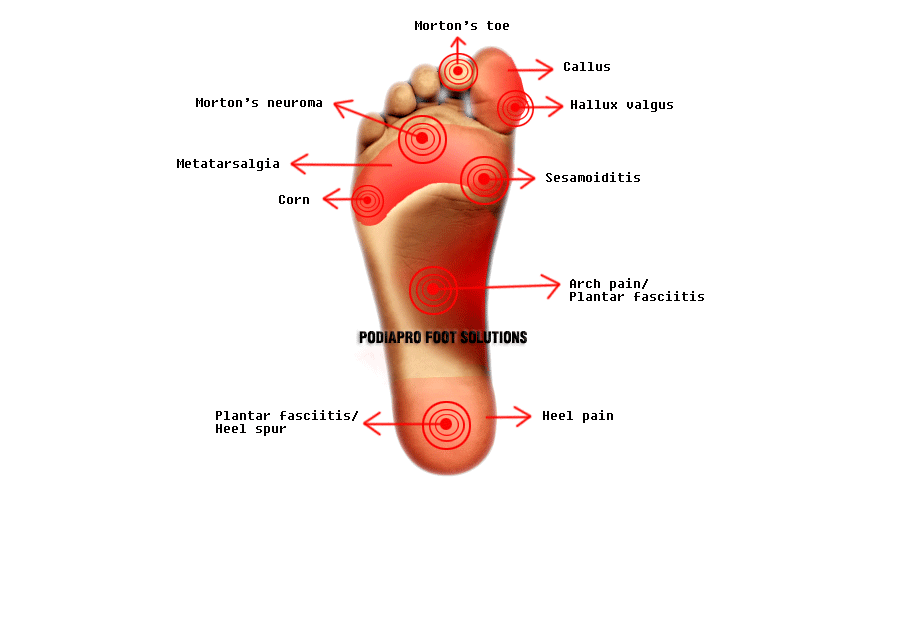
Heel pain or pain under the bottom of the foot is the most common type of foot pain. The most common causes of heel pain are heel spur (also called as bone spur in the heel or calcaneal spur), plantar fasciitis and overloading of the heel. Children under the age of 14 can get heel pain due to a condition called Sever’s disease. Most cases of heel pain can be treated with custom insoles that offer posture correction, shock absorption at heel and weight pressure offloading. To know more about what is a heel spur, or what does a heel spur look and feel like, our heel spur treatment procedure, click on the heel spur button below. Same for the others.
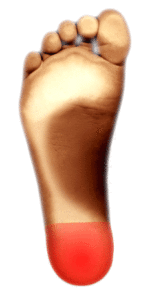
Pain in the medial arch is caused mainly when the arch stops providing support as it becomes weak, causing it to collapse or flatten on bearing weight. When the patient stands, the arch height becomes zero or minimal and this condition is called as functional flat feet – where the feet have weak arches. Some patients naturally do not have an arch and they have what is commonly called as a flat foot or flat feet if it affects both feet. A patients having a rigid flat foot can also develop a corn on the arch of the foot due to excessive pressure.
Arch pain is also caused due to plantar fasciitis where the plantar fasciia, the tendon that forms the arch is stretched excessively or by a foot that has a high arch, a condition where the arch of the foot is excessively high (high arches mean the foot arch has a very steep curvature). Arch pain is also caused by Posterior Tibial Tendon Dysfunction (PTTD) or Posterior Tibial Tendonitis which is an inflammation of the posterior tibial tendon. Insoles work really well for pain relief in flat feet and arch pain.
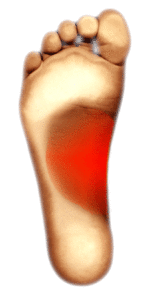
Pain in the forefoot or the ball of the foot region can affect foot gait. The forefoot, being the propulsive zone, is the area which propels the body forward while walking or running and the ball of the foot needs sufficient comfort, stability and cushioning for the body to move forward smoothly.
When there’s inflammation in this region that causes general pain in the forefoot, it’s a condition called metatarsalgia. If you feel shooting pain at a certain point, it could be a condition called Morton’s neuroma. When the great toe becomes very stiff or rigid, the condition is called hallux rigidus and when it starts deviating towards the other toes causing its bony joint to protrude towards the outside, it is a case of hallux valgus and bunion. Pain in the bone behind the great toe is mainly caused by sesamoiditis.
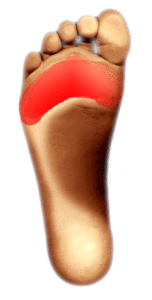
Ideally, the toes bear negligible weight while you are standing if your feet have sound posture. When the foot arch collapses, the arch being unable to bear the weight of the body, puts the toes under pressure from the excessive weight they are subjected to. This causes conditions that cause your toes to pain.
When the great toe becomes very stiff or rigid, the condition is called hallux rigidus and when it starts deviating towards the other toes causing its bony joint to protrude towards the outside, it is a case of hallux valgus and bunion. Morton’s toe is a condition in which the second toe is longer than the great toe causing it to hurt. Hammer toes, mallet toes are conditions affecting the second through the fifth toes (mainly second) that depict the formation of various types of curvature in the toes.
While insoles do not correct the toe deformity, they can be designed to offload pressure and provide support to the toe to aid its function.
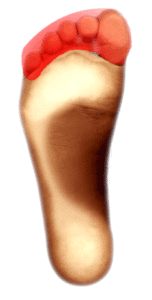
A corn or callus on the lower surface of the foot is usually caused due to excessive pressure at the point. Plantar warts are hard grainy growths on the heel or the ball of the foot, caused by a virus, and can be very painful. Custom insoles can offload this pressure from the affected area having the corn, callus or wart and bring about pain relief. Many a times, the corn or the callosity get healed when the pressure is offloaded.

Diabetic foot patients have reduced blood flow to the feet thus having reduced sensations or sensations of hot / cold / tingling in the feet. The nerves do not function normally and this may cause the foot to start getting deformed. The deformed foot and the reduced sensation can also cause excessive pressure hotspots in the sole of the foot where sores and ulcers can develop if the pressure is not offloaded. Insoles with the right amount of cushioning and support are important to be worn by all diabetic patients to protect their feet from developing sores. The entire diabetic foot needs protection via insoles and footwear.
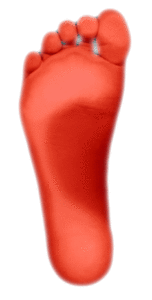
Patients of RA could suffer from painful joins in the foot and have deformed toes. The deformity can extend to the rest of the foot too with the ankle going into severe valgus and the arch of the foot getting flattened. Insoles can provide the right kind of support and comfort to help them move around with less effort and with some comfort.
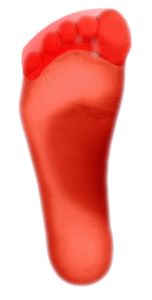
The navicular bone is the most prominent bone on the medial side of the foot. The navicular area can experience pain when the patient pronates excessively, causing the navicular bone to drop when it bears weight. This condition is called a navicular drop and insoles can most certainly help support the navicular and keep it stable in its position to reduce or eliminate the pain. Navicular pain can also be called by a condition called as accessory navicular, and this too can be helped with insoles.
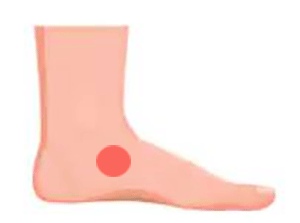

C 1, Gate No. 2, Shreyas Industrial Estate
Off Western Express Highway
Goregaon East
Mumbai, India